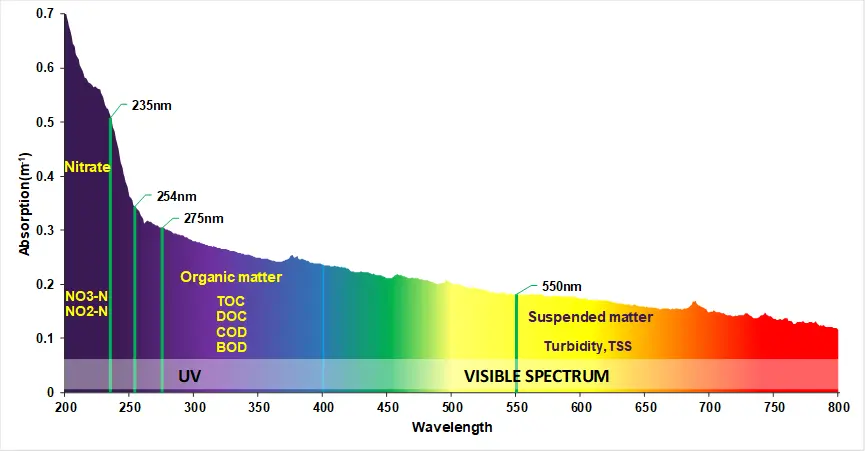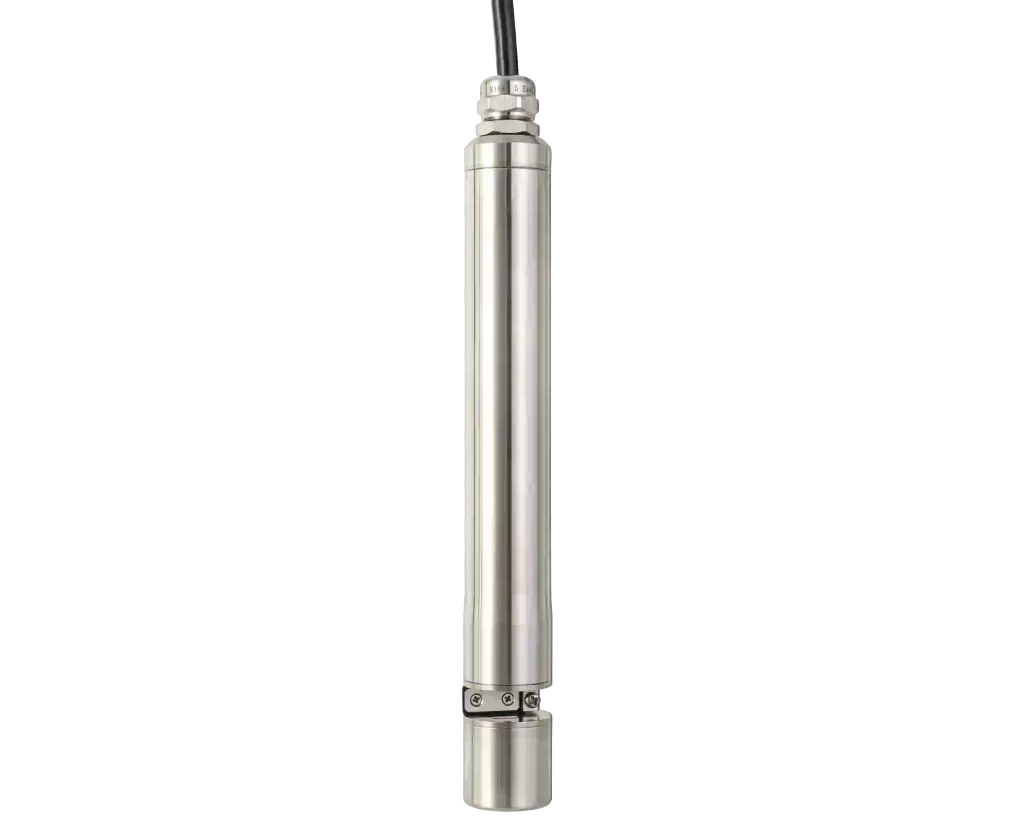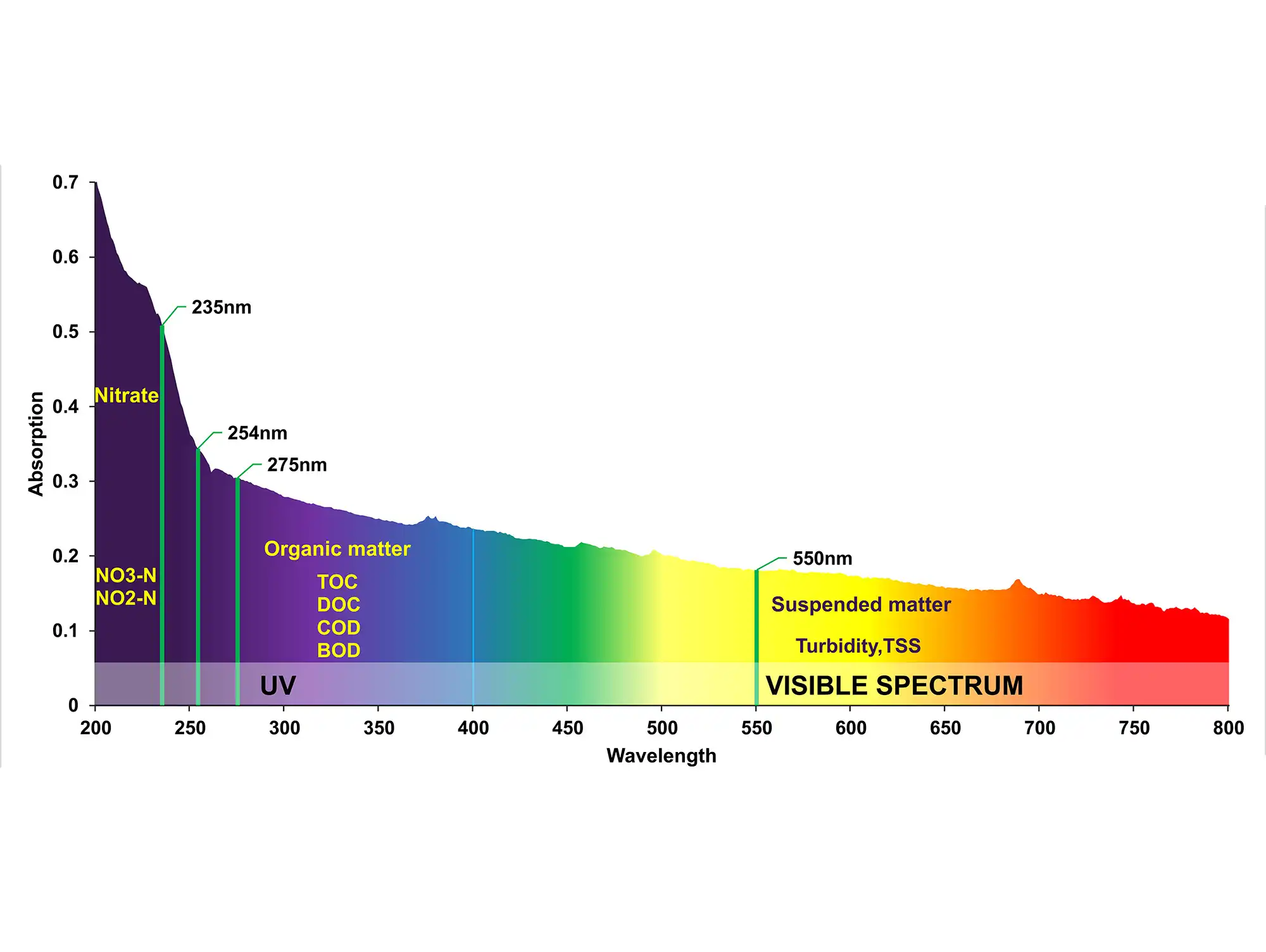Dans le paysage évolutif de la gestion de la qualité de l'eau, des données fiables et en temps réel sont essentielles pour prendre des décisions éclairées. Parmi les dernières innovations, le capteur de qualité de l'eau à longueurs d'onde multiples est un outil puissant et polyvalent. Mais qu'est-ce qui le rend si efficace et comment se compare-t-il aux autres solutions disponibles sur le marché ?
Comment ça marche : La science derrière la détection multi-longueur d'onde
A capteur de qualité de l'eau à longueurs d'onde multiples fonctionne selon le principe de Spectroscopie d'absorption UV-Vis. Il utilise quatre longueurs d'onde spécifiques pour analyser la composition de l'eau avec précision :
- 235 nm: La longueur d'onde d'absorption primaire pour les nitrate azote (nitrate) mesure
- 254 nm et 275 nm: Utilisé pour détecter matière organique (représentant DCO, COT, DBO)
- 550 nm: Dédié à la mesure turbidité et solides en suspensionpermettant de réaliser en temps réel des compensation de la turbidité

Cette approche multiparamétrique permet au capteur de distinguer les différents contaminants et de compenser les interférences, fournissant ainsi des mesures précises et stables, même dans des conditions d'eau dynamiques.
Principaux avantages : Pourquoi choisir la technologie des longueurs d'onde multiples ?
Précision accrue grâce à la compensation intelligente
Les capteurs traditionnels à longueur d'onde unique sont confrontés à des interférences dues à la matière organique et à la turbidité. Notre conception à longueurs d'onde multiples mesure ces paramètres simultanément, en appliquant des algorithmes avancés pour garantir la qualité de l'eau. des relevés de nitrates fiables même dans des conditions difficiles.
Fonctionnement écologique
En tant que capteur optique in situIl ne nécessite ni produits chimiques ni réactifs, ce qui élimine les déchets et la pollution secondaire. Il s'agit donc d'un une solution respectueuse de l'environnement qui s'aligne sur les pratiques de gestion durable de l'eau.
Résultats rapides
Avec des cycles de mesure aussi rapides que 10 secondesLe capteur fournit des données en temps quasi réel, ce qui permet de réagir rapidement aux modifications de la qualité de l'eau et aux épisodes de pollution.
Conception à faible entretien
Le système intégré brosse autonettoyante empêche automatiquement l'encrassement, garantissant une fiabilité à long terme et réduisant les besoins d'entretien manuel.
Déploiement robuste et flexible
Avec Protection IP68 et Communication RS485Le capteur résiste aux environnements difficiles tout en s'intégrant facilement aux systèmes de surveillance existants. Ses faible consommation d'énergie permet un fonctionnement sur batterie, ce qui en fait un outil idéal pour les endroits éloignés.
Capteurs à longueur d'onde multiple ou à longueur d'onde unique pour l'azote nitrique
Pour comprendre la valeur du capteur multi-longueur d'onde, il est utile de le comparer au capteur plus basique, le capteur à longueur d'onde unique-une alternative courante pour la mesure des nitrates :
| Fonctionnalité | Capteur à longueur d'onde unique | Capteur à longueurs d'onde multiples |
|---|---|---|
| Utilisation de la longueur d'onde | Seulement 235nm (ou similaire) pour le nitrate | 4 longueurs d'onde (235nm, 254nm, 275nm, 550nm) pour les nitrates, les matières organiques et la turbidité |
| Traitement des interférences | Pas de compensation - les matières organiques et la turbidité faussent les résultats dans l'eau réelle | Compensation active utilisant des longueurs d'onde dédiées ; précise même en cas d'interférence |
| Performance en conditions réelles | Fiable uniquement pour les solutions standard (en laboratoire) ; médiocre pour les eaux complexes | Précision constante dans les eaux naturelles, municipales ou industrielles |
En bref, les capteurs à longueur d'onde unique fonctionnent bien dans des environnements de laboratoire contrôlés, mais ne tiennent pas compte des variables du monde réel. La conception à longueurs d'onde multiples résout ce problème en s'attaquant de front aux interférences.
Applications idéales
Grâce à sa réponse rapide, sa maintenance minimale et ses capacités de compensation des interférences, le capteur multi-longueur d'onde excelle dans les environnements avec une qualité d'eau relativement stableoù suivi des tendances est prioritaire, et les solides en suspension sont faibles. Parfait pour :
- Surveillance des effluents des stations d'épuration
- Évaluation des rivières, des eaux de surface et des eaux souterraines
- Surveillance des réseaux d'assainissement urbains
- Contrôle de la qualité des eaux industrielles
Pour des scénarios plus complexes avec une composition très variable ou des exigences de précision rigoureuses - comme les entrées des stations d'épuration des eaux usées ou la surveillance des processus industriels - le système de contrôle de la qualité de l'eau a été mis au point pour répondre aux besoins de la population.capteurs à spectre complet peut être plus approprié.
Conclusion
Le capteur de qualité de l'eau à longueurs d'onde multiples représente une avancée significative dans la technologie de surveillance de l'eau. En combinant plusieurs longueurs d'onde avec des algorithmes de compensation intelligents, il fournit des données fiables en temps réel tout en minimisant la maintenance et l'impact sur l'environnement.
Qu'il s'agisse de contrôler la conformité aux réglementations, de suivre les tendances environnementales ou de gérer les processus industriels, ce capteur offre la précision et la fiabilité nécessaires à une gestion efficace de la qualité de l'eau.

SPECSENS SPS-M-L10 - Capteur d'eau à longueurs d'onde multiples

